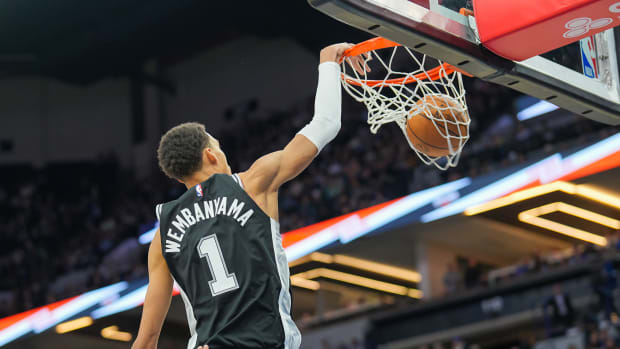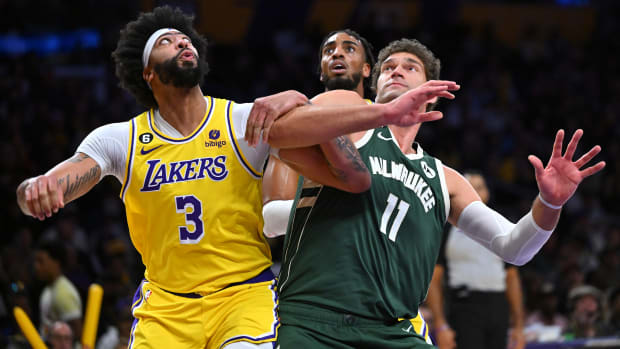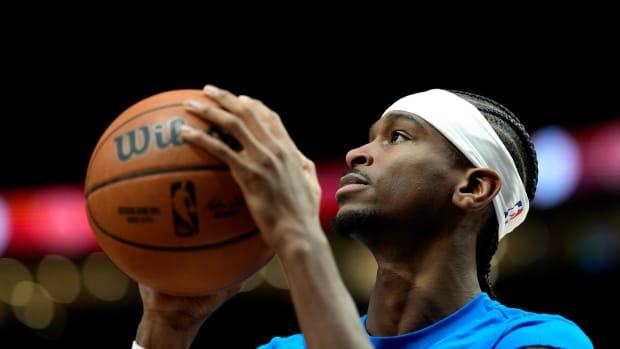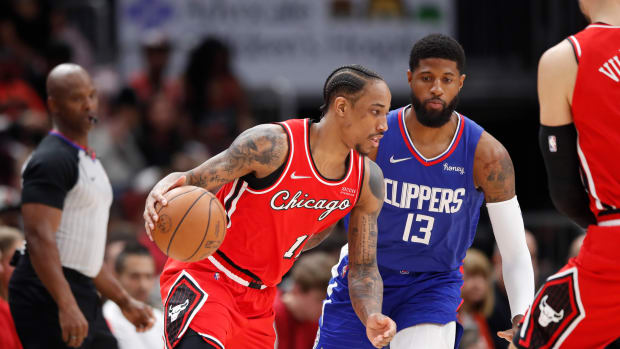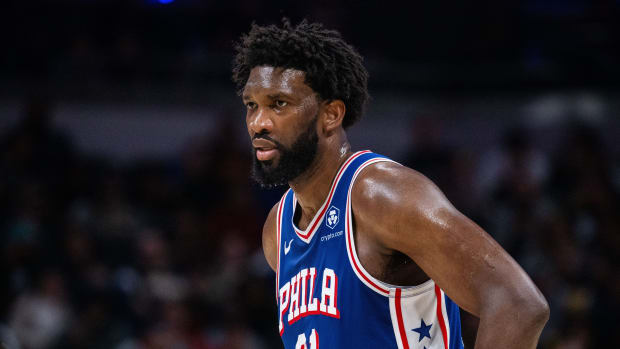NBA Trainers Offer Tips to Improve Your Pickup Basketball Game
The purest form of basketball isn’t typically seen on a hardwood court in front of thousands of rabid fans. The purest form of basketball is more often seen at local parks, on the blacktop across the street, or the only gym in town offering a free run. Pickup ball is one of the most popular sports in the world, enjoyed by players of all ages.
Of course, players who are serious about pickup are always looking for an edge to take their game to the next level—even if it’s only for bragging rights over their most hated competitor. For those looking to improve their skills, SI spoke to three people with an intimate knowledge of how some of the top athletes in the world better their own games.
Doug Eberhardt is a die-hard pickup player who’s also spent some time in the NBA doing part-time assistant coaching work with the Grizzlies, Knicks and Rockets. Brandon Payne runs Accelerate Basketball Training in Charlotte, and he’s also the personal trainer for the NBA’s only unanimous MVP in league history, Stephen Curry. Rob McClanaghan is a personal skills trainer who’s worked with numerous NBA players, including Curry, Kevin Durant, Russell Westbrook and many more. Together, they can help you gain advantages in your pickup game—from preparation to recovery.
Summer Of Stars: How A 2010 Workout Set Stage For NBA Finals
“The first thing you have to do is a make a self-assessment and find out where you are physically,” says Payne. “If you’re sore all the time, if something hurts, you need to find out where you have your highest movement dysfunction.”
Payne suggests that the best way for your body to become fully functional is to figure out what’s wrong and work on those areas in the gym. If you’re pickup game is being slowed down by a bad back or tight hamstrings, Payne says to focus on activating those areas during your non-basketball workouts. Once your body is ready for five-on-five, then you can start practicing like a two-time MVP.
“One thing I’ll suggest is to overload your workouts,” says Payne. “With Steph, we aren’t just doing catch-and-shoots. We have his body moving in four different directions before making him shoot.”
So next time you bring a ball to an open hoop, don’t set up shop in one corner to shoot. Take a dribble left. Take a dribble right. Practice stepbacks. Adding dynamic movements to your practices can greatly improve your footwork, which Payne says is the biggest key to improving your game.
McClanaghan stressed the importance of marrying quality with volume no matter the drill you’re participating in.
“The main key to improvement would be high repetition, but perfect high repetition,” McClanaghan said, “You need to get those perfect reps up at a high volume and a high intensity. The harder you work, the game should be easy.”
Once it’s game time, the older you get, keeping your body fresh becomes just as important as your skills. Eberhardt, 54, sometimes plays in games with people three decades younger than him, but he finds ways to keep his body spry.
“I have started becoming a foam roller guy,” Eberhardt says of his routine. “I’ve done work for a few NBA teams, and I’ve picked up a little bit in terms of doing a dynamic warmup. I like to do movement exercises with a ball in my hand. After that I do the foam roller, then get back out on the court and do a shooting routine.”
If you only have three or four minutes to get loose before a game, Eberhardt suggests doing karaoke steps while carrying a ball to warm up and also start to get a feel for the game. Frontward lunges with a ball in hand also help to get your legs and core ready for a full-court battle.
Once its gametime, all the skills in the world won’t help you if you don’t have any kind of basketball IQ. Eberhardt despises playing with guys who embody pickup stereotypes. Basically, don’t be the guy who asks for the toughest defensive assignment when you can’t guard a traffic cone, don’t run to the post every time down the court, and don’t unleash 42 jab steps at the elbow before hoisting a contested shot.
“For the average pickup guy, a lot of the same things you would stress with a team, I would tell pickup guys to incorporate,” Eberhardt says. “I’m always trying to learn new things. Pickup players need to remain curious.”
Buy in to sell out: A skills trainer explains the world of NBA player development
Things that help to be curious about: Setting different kinds of screens, on and off the ball. Cutting on offense. And communicating on defense. One thing that pickup players tend to underestimate? McClanaghan says it’s the mid-range jump shot. If you can perfect that skill, you can become invaluable in almost any game.
If you’re super serious about keeping your body in shape in between pickup runs, yoga was suggested by both Payne and Eberhardt as ways aging players can remain flexible. But whether you’re an NBA athlete or someone who plays once a month, McClanaghan also stressed the importance of not doing too much.
“I even tell my guys, you can’t do seven days a week,” McClanaghan said. “You have to take some days off. You need to know when to slow down.”
“Listen to your body, it signals correctly,” Payne echoed. “If you’re sore, your body is telling you today is not the day.”
But if you’re the type for whom ball never sleeps, even when you’re sore you can work on your game. Payne suggests form shooting and stationary ball-handling as things to practice when everything is hurting. Rest is an important part of recovery, but Eberhardt isn’t afraid to aid that process with some Advil and chocolate milk.
With these tips, you may not necessarily be ready for an NBA tryout. But at the very least, you should be able to stay on the court for a few more games the next time you find a group of five to run with. The only thing left to do is go out and play.































